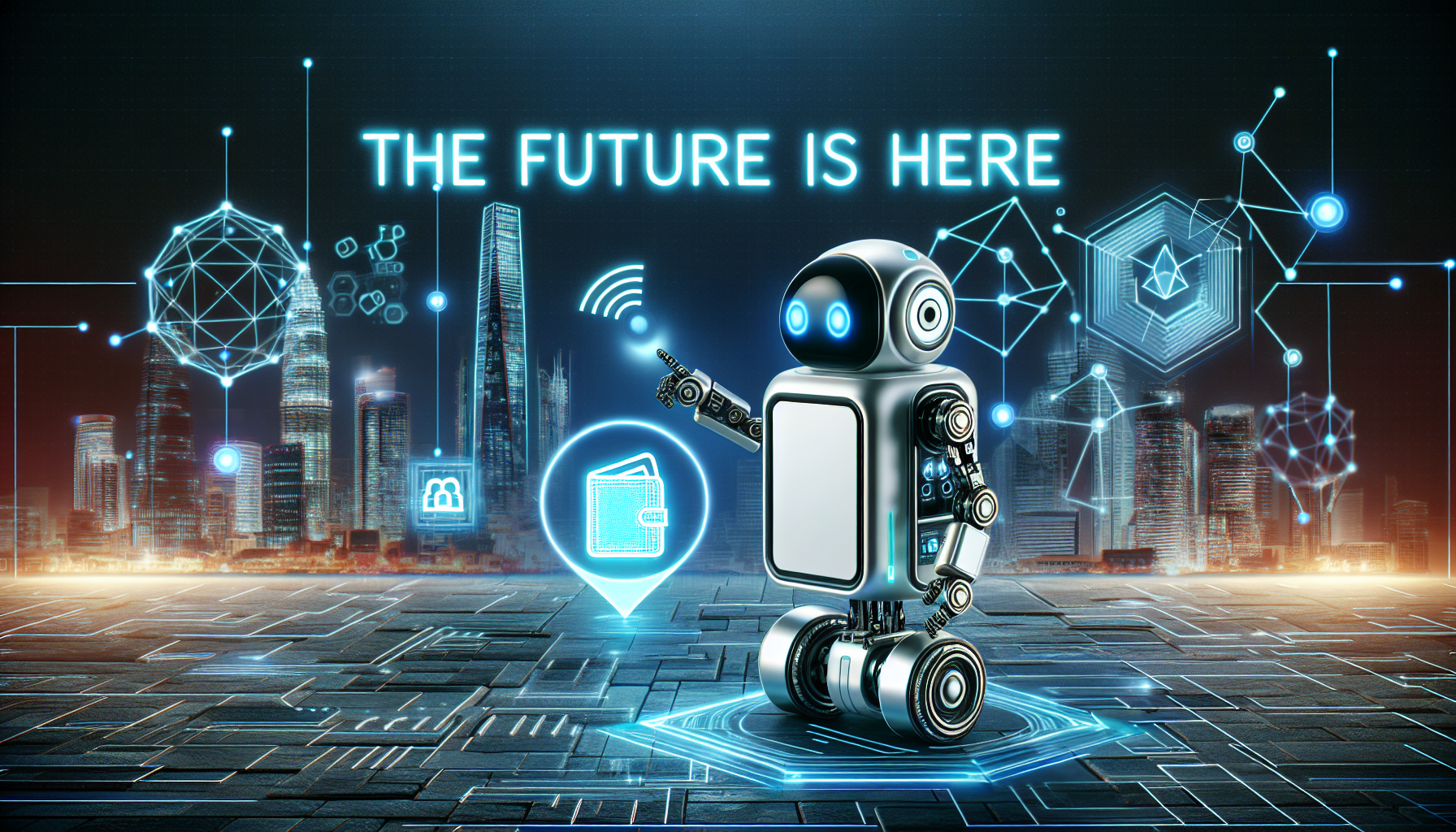The Future is Here: How MPC Wallet is Shaping Autonomous Mobile Robots with AI
Autonomous Mobile Robots (AMRs) are revolutionizing a multitude of industries with their ability to independently chart paths and tackle unexpected hurdles, largely thanks to advancements in AI technologies like the MPC wallet. This development not only enhances their navigational capabilities but also carves a pathway for the integration of services such as White Label Crypto Cards, offering an innovative edge to autonomous systems.
With the fusion of AI and MPC wallet technology, the scope of Autonomous Mobile Robots is expanding into realms previously unimagined. This article will explore the evolutionary journey of AMRs empowered by AI, highlight the key AI technologies boosting AMR capabilities, and delve into the practical applications of these sophisticated machines, setting the stage for a future where AI-driven autonomous mobile robotics redefine operational efficiency and productivity.
The Evolution of Autonomous Mobile Robots with AI
The journey of autonomous robots has been nothing short of revolutionary, beginning from the late 1940s when British neurophysiologist W. Grey Walter introduced the first autonomous robots, known as ‘tortoises’. These simple machines laid the groundwork for what was to come. By the 1950s, George Devol’s development of Unimate, the first industrial robot, marked a significant leap forward. This era saw robots primarily engaged in heavy lifting tasks on assembly lines.
- 1970s: The exponential growth of the industrial robot market began, driven by the need for automation. This period witnessed the creation of smaller, electric models equipped with advanced controls and motors, making them ideal for assembly work. The versatility of robots expanded to include arc welding, intricate spray painting, and operations in hazardous environments.
- 1980s Onwards: The integration of robots with advanced sensors and basic machine vision systems in the 1980s enabled them to detect and track components on assembly lines, further enhancing their utility. Today, the landscape of autonomous robots is vast, encompassing industrial sectors, agriculture, health, logistics, and property maintenance. A significant shift towards the development of ‘cobots’ or collaborative robots designed to operate safely alongside humans has been observed. These cobots, equipped with force-limited joints and computer vision, are a testament to the evolution of autonomous robots, with the cobot market nearing $1 billion and 40,000 operational machines worldwide.
The classification of AMRs into types such as Goods-to-Person Robots, Pallet Movers, Collaborative Robots, and more, underscores the diversity and specialization within this field. This evolution from basic task performers to sophisticated machines capable of working alongside humans showcases the remarkable journey of autonomous mobile robots powered by AI.
AI Technologies Enhancing AMR Capabilities
Autonomous Mobile Robots (AMRs) are increasingly becoming the backbone of various industries, thanks to the integration of AI technologies that significantly boost their capabilities. Here are the key AI advancements enhancing AMR functionalities:
- Power Source and Maintenance:
- LiFePO4 (Lithium Iron Phosphate) batteries are preferred for their safety, longevity, and high performance.
- Essential maintenance practices include maintaining charge levels, using original chargers, and safe battery removal to maximize operational capabilities.
- AI-Driven Enhancements:
- AI provides AMRs with intelligent decision-making abilities by analyzing vast data points.
- Examples include AI-powered machine vision systems, edge computing, and agricultural drones, showcasing the diverse applications of AI in robotics.
- Learning and Adaptation:
- Deep reinforcement learning is revolutionizing the efficiency of AMRs, significantly reducing the time needed for robots to acquire new skills.
- AI enables AMRs to adapt their behavior proactively, such as avoiding high-traffic areas during peak times, enhancing both efficiency and safety in their operational environment.
These advancements not only underscore the pivotal role of AI in evolving AMR capabilities but also highlight the potential for future innovations in autonomous mobile robotics.
Real-World Applications of AI-Powered AMRs
In the realm of industry and healthcare, Autonomous Mobile Robots (AMRs) are making significant strides, transforming operations and care delivery.
- Industry Applications:
- Autonomous Material Transportation: AMRs, such as the OTTO 100 and OTTO 750, are revolutionizing the way materials are transported within manufacturing facilities and warehouses. They navigate large areas autonomously, reducing worker travel time and handling repetitive tasks efficiently.
- Light-Directed Material Handling: Systems like Pick to Light and Put to Light leverage AMRs to improve order picking accuracy and speed, meeting customer demands effectively while optimizing space and reducing costs.
- Flexible Line Setups: AMRs enable industries to reconfigure production lines with minimal downtime, facilitating agile responses to market changes and generating substantial revenue.
- Healthcare Applications:
- Supply Delivery and Disinfection: In hospitals, AMRs are deployed for delivering supplies and performing disinfection tasks, thereby enhancing patient care and safety.
- Patient Navigation: These robots assist patients by guiding them through hospital corridors to their destinations, improving the overall patient experience.
These applications highlight the versatility of AMRs in improving workflow, productivity, and safety across various sectors. Furthermore, with the integration of MPC wallets, there is potential for managing digital assets related to robot maintenance, updates, or transactions, offering a secure and efficient means to handle data protection regulations. This synergy between AMRs and MPC wallets paves the way for innovative solutions in autonomous mobile robotics, optimizing operations and enhancing service delivery in both industrial and healthcare settings.
The Future of AI in Autonomous Mobile Robotics
As Autonomous Mobile Robots (AMRs) continue to evolve, the integration of AI technologies and advanced battery solutions like those offered by MANLY Battery are pivotal in shaping the future landscape of autonomous mobile robotics. Here’s how:
1. Battery Innovation and Efficiency:
- MANLY Battery’s LiFePO4 and lithium-ion batteries: Offer unmatched durability, safety, and performance, ideal for the demanding environments AMRs operate in.
- Customization and Quality: Tailored solutions meet specific AMR requirements, ensuring optimal functionality.
- Maintenance Services: Including testing, replacement, and recycling, extend the lifespan and efficiency of AMRs.
2. AI-Powered Robotic Solutions:
- Healthcare: Enhance surgical precision, aid in rehabilitation, relieve healthcare workers by automating routine tasks, and support elderly patient care.
- Industrial: Improve workplace safety by undertaking high-risk tasks, optimize operational efficiency, and ensure precise material handling.
3. MPC Wallet Integration:
- Enhanced Security and Privacy: Utilizing secure multiparty computation for asset management, offering robust protection against cyber threats.
- Operational Flexibility: Customizable security protocols to fit specific needs, ensuring efficient and secure transactions.
- Future Advancements: Efforts to improve user-friendliness and interoperability will drive wider adoption, making MPC wallets an integral part of the digital asset ecosystem within AMR operations.
These developments underscore the transformative potential of AI and advanced battery technology in autonomous mobile robotics, promising a future where AMRs are more efficient, secure, and versatile.
Conclusion
The exploration of Autonomous Mobile Robots (AMRs) powered by AI technologies and the integration of MPC wallet technology illustrates a pivotal moment in our technological evolution. Through the journey from basic autonomous units to sophisticated robots capable of advanced interactions and decision-making, we have unveiled the limitless potential of AMRs across various industries. The significance of these advancements—ranging from enhanced operational efficiency in manufacturing to improved patient care in healthcare—cannot be overstated. Their impact extends beyond immediate applications, promising a future where autonomous robotics play an integral role in the fabric of societal operations and services.
As we look towards this promising future, the continued fusion of AI, advanced battery technology, and secure digital asset management through innovations like MPC wallets will be crucial. These elements not only elevate the capabilities and efficiency of AMRs but also ensure their secure and adaptable integration into our digital world. The implications of such advancements are profound, paving the way for further research, development, and application of these technologies in creating a more efficient, safe, and innovative world. This is not merely a testament to the progress made thus far but also a beacon guiding us towards a future ripe with untapped potential and limitless possibilities.


